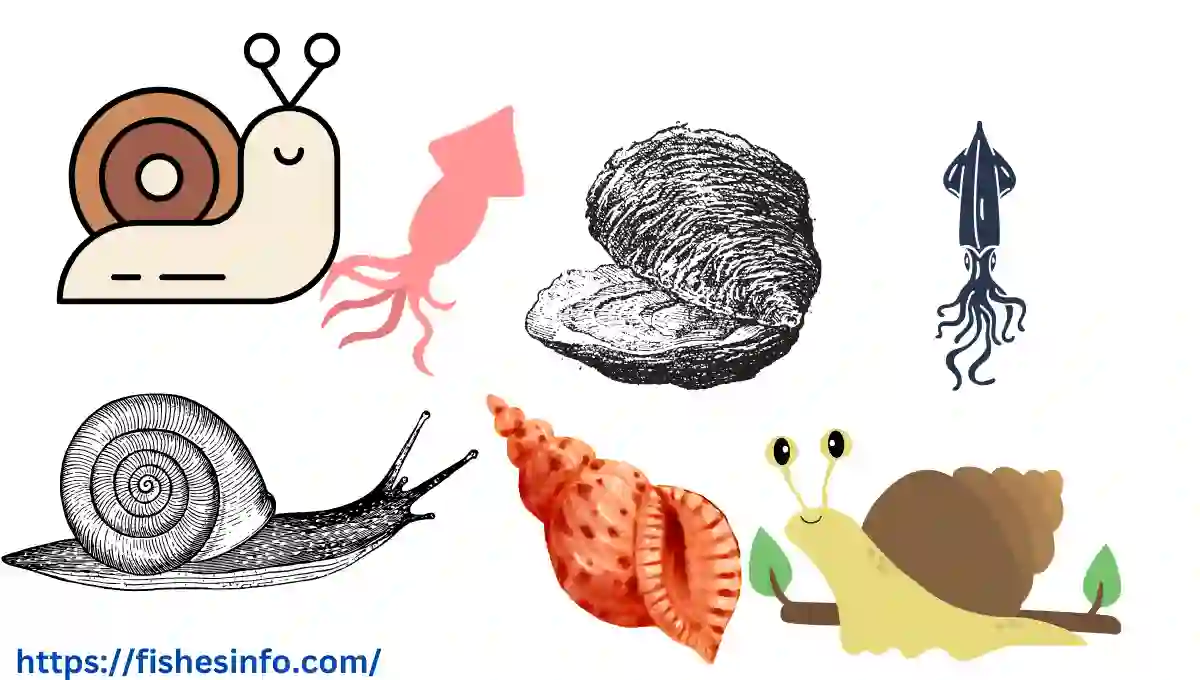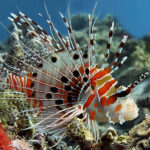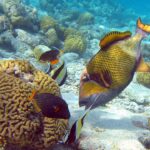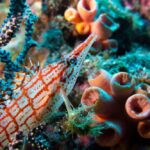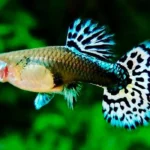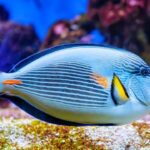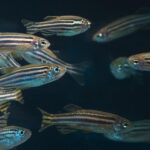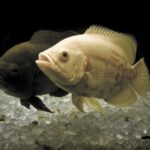Dive into the fascinating globe of Mollusks, a land filled with some of the most bizarre and varied species on the earth. These soft-bodied, frequently shell-bearing critters are not merely a decoration on the ocean bottom or a food connoisseur’s joy, but also a critical element of our biological system.
This article begins with an interesting voyage into the lives of molluscs, revealing light on their ecological relevance, unique habits, and the evolutionary miracles that make them a distinctive group in the animal realm.
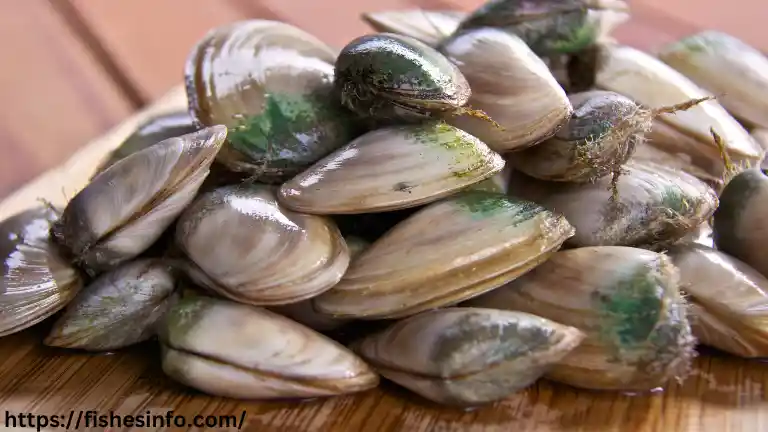
Definition of Molluscs
Mollusks are a wide group of creatures, mainly identified by their soft bodies which are frequently covered by a hard shell. Think of snails with their spiral shells, or clams that conceal within two identical shells.
They dwell in numerous environments, including seas, rivers, and even on land. These critters move in diverse ways – some crawl and others swim – and are crucial for the ecology, fulfilling responsibilities like cleansing the water and acting as food for other species.
Mollusks or Molluscs
Yes, both the terms are correct. “Mollusks” is the correct spelling in American English. In British English, it is spelled “Molluscs.” Both spellings refer to the same group of animals in the phylum Mollusca.
Introduction to Phyllum Molluscs
Phylum Mollusca is one of the most varied and successful groupings of invertebrates, with over 100,000 recognized species. Molluscs are found in marine, freshwater, and terrestrial settings, demonstrating a broad variety of morphological and behavioral adaptations.
Key Points about Mollusca
- Phylum Mollusca is one of the most varied and successful categories of invertebrate creatures.
- Molluscs display a vast diversity of body shapes, from the coiled shells of snails to the streamlined bodies of squid.
- They are found in marine, freshwater, and terrestrial settings, exhibiting amazing versatility.
- Mollusks feature a muscular foot used for mobility, a visceral mass containing internal organs, and a mantle that frequently secretes a shell.
- They contain a radula, a specialized feeding organ used for scraping or cutting food.
- Molluscs have significant ecological functions as filter feeders, herbivores, predators, and decomposers.
- Economically, molluscs are significant as food sources, producers of pearls and shells, and indicators of environmental health.
- Threats to molluscs include habitat damage, pollution, overfishing, and climate change.
- Conservation initiatives are vital to safeguard the mollusk variety and maintain environmental equilibrium.
Classification of Mollusca
Mollusca is a varied phylum of invertebrate organisms that include gastropods (snails and slugs), bivalves (clams, mussels, and oysters), cephalopods (squid, octopuses, and nautiluses), and numerous more lesser-known classifications. The categorization of Mollusca is based on their anatomical traits, environment, and behavior.
Class Gastropoda
- Gastropods are the biggest and most varied class of molluscs, with over 60,000 species.
- They are characterized by a single, coiled shell (in most species) and a muscular foot utilized for mobility.
- Examples include snails, slugs, and limpets.
Class Bivalvia
- Bivalves are molluscs with two hinged shells that are generally symmetrical.
- They lack a recognizable head and have a decreased radula (feeding organ).
- Bivalves are filter feeders, having gills employed for breathing and filter-feeding.
- Examples include clams, mussels, and oysters.
Class Cephalopods
- Cephalopods are distinguished by a modified foot that generates tentacles around their mouth.
- They are the most intellectual and active of the molluscs, having well-developed sensory organs and a sophisticated neurological system.
- Cephalopods include squid, octopuses, cuttlefish, and nautiluses.
Class Polyplacophora
- Their bodies are flattened dorsoventrally, resembling a leaf, and exhibit bilateral symmetry.
- The shell comprises eight longitudinal plates.
- They possess a well-developed radula.
- Their ventral foot is flat.
- Examples include Chiton and Cryptochiton.
Class Scaphopoda
- These organisms are typically found in marine environments.
- They lack eyes and tentacles.
- Their foot is reduced in size.
- Their bodies exhibit bilateral symmetry.
- Examples of such organisms include some species of parasitic flatworms.
Class Monoplacophora
- The body displays bilateral symmetry.
- They have a head that lacks eyes and tentacles.
- Respiration takes place through externally located gills.
- Nitrogenous waste is excreted through nephridia.
- An example of such a creature is Neopilina.
Class Aplacophora or Solenogasters
- The body is either cylindrical or bilaterally symmetrical.
- They lack a head, shell, mantle, nephridia, and foot.
- They do not have digestive ceca.
- Their bodies are covered by a spicule-bearing cuticle.
- They feature a dorsal longitudinal keel or crest.
- Examples include Neomenia and Chaetoderma.
Class Scaphopoda
- These organisms are typically found in marine environments.
- They lack eyes and tentacles.
- Their foot is reduced in size.
- Their bodies exhibit bilateral symmetry.
- An example of such organisms includes some species of marine worms.
Class Pelecypoda
- They live in aquatic environments.
- Their bodies are bilaterally symmetrical and laterally compressed.
- They lack a distinct head.
- These organisms typically burrow in mud and sand.
- Examples include mussels and Unio freshwater mussels.
Characteristics of Mollusca
Organisms in the phylum Mollusca exhibit the following traits:
- They are primarily marine and freshwater species, with a few terrestrial species found in moist soil.
- They have organ-system-level organization.
- Their body cavity is present.
- The body is divided into the head, visceral mass, muscular foot, and mantle.
- The head includes tentacles and compound eyes.
- They are covered by a calcareous shell.
- The muscular foot aids in locomotion.
- They have a well-developed digestive system, with the radula serving as the rasping organ for feeding.
- Respiration occurs through the general body surface, gills, or pulmonary sac.
- Blood circulates through an open circulatory system.
- They possess a pair of metanephridia for excretion.
- The nervous system includes several paired ganglia and nerves.
- Sensory organs include tentacles, eyes, osphradium, and statocysts.
- Most molluscs have separate sexes, but some are hermaphrodites. Fertilization can be external or internal.
- They are generally oviparous, with indirect development.
Examples of Mollusca
- Snails (Gastropoda): Characterized by coiled shells and a muscular foot, found in various habitats.
- Clams, mussels, oysters (Bivalvia): Filter feeders with hinged shells, living in aquatic environments.
- Squid, octopus, nautilus (Cephalopoda): Marine molluscs with complex behaviors and tentacles.
- Chitons (Polyplacophora): Have eight dorsal plates, found in rocky coastal areas.
- Limpets (Patellidae): Conical shells, cling to rocks in intertidal zones.
- Abalones (Haliotidae): Ear-shaped shells, prized for iridescence.
- Conch (Strombidae): Large gastropods with spiral shells, used for food and decoration.
- Cuttlefish (Sepiida): Have a cuttlebone, known for camouflage and ink production.
- Pila (Apple snail): Freshwater snails with round shells, found in ponds and lakes.
- Limax (Slug): Shell-less terrestrial mollusks, often found in gardens and damp areas.
- Unio (Freshwater mussel): Freshwater bivalves, are important for freshwater ecosystems.
- Turbinella (Shankha): Marine gastropods with spiral shells, used as ceremonial trumpets.
- Helix (Garden snail): Common land snails found in gardens and fields.
- Octopus (Devilfish): Intelligent marine animals with eight arms, known for their camouflage abilities.
- Loligo (Squid): Marine cephalopods with elongated bodies and tentacles, commonly used as food.
Significance of Classification
Understanding the classification of Mollusca is crucial for examining their evolutionary linkages, ecological purposes, and anatomical adaptations. It helps scientists and researchers organize and explore the enormous diversity of mollusc species and their interactions with the environment.
Morphology of Molluscs
The morphology of mollusks varies significantly depending on the species, although there are three essential traits common to many mollusks:
Body Plan
- Mollusks often have a soft body that is frequently protected by a hard shell.
- The body is separated into three basic parts: the head, the visceral mass (containing organs), and the muscular foot.
Shell
- Many mollusks have a shell, which is produced by a specialized tissue called the mantle.
- The shell may vary widely in size, shape, and content across various species.
Head
- The head usually contains the mouth and sensory organs, such as eyes and tentacles.
- However, not all mollusks have well-developed heads or eyes.
Foot
- The muscular foot is utilized for walking. In certain mollusks, such as snails, the foot is wide and flat, whereas in others, like clams, it is designed for digging or attaching to surfaces.
Mantle
- The mantle is a thin, fleshy covering of tissue that covers the visceral mass and secretes the shell in shell-bearing mollusks.
- It also plays a part in breathing and excretion.
Radula
- Many mollusks have a feeding mechanism called a radula, which is a ribbon-like structure with rows of tiny, chitinous teeth.
- The radula is used to scrape or chop food.
Gills
- Mollusks that live in watery habitats frequently have gills for breathing.
- These gills are normally positioned within the mantle cavity.
Nervous System
- Mollusks have a basic nervous system consisting of a pair of cerebral ganglia (brain) and a nerve cord.
- Some species also have extra ganglia and nerve groups.
Reproductive System
- Mollusks may be either dioecious (different sexes) or hermaphroditic (having both male and female reproductive organs).
- Fertilization may be external or internal, depending on the species.
Overall, the morphology of mollusks is highly diverse, reflecting their adaptation to a wide range of environments and lifestyles.
External Features of Molluscs
- The mantle, or pallium, is the dorsal epidermis of mollusks.
- In caudofoveates and solenogasters, the mantle is covered by a cuticle with scales or hard bodies.
- In Polyplacophora, the chitons develop a series of eight articulating plates or valves.
- The mantle and shell are laterally compressed in scaphopods and bivalves.
- The head is free of the mantle and shell in gastropods and cephalopods.
- The molluscan body, containing all visceral elements, is connected to the mantle by dorsoventral musculature.
- The head has tentacles in scaphopods, labial palps in bivalves, head tentacles in gastropods, and arms in cephalopods.
- The foot forms an anteriorly elongated burrowing organ in scaphopods, axe-shaped to vermiform in bivalves, and modified to a siphon or funnel in cephalopods.
- The mantle cavity is found between the mantle rim and the body.
- The pallial complex typically contains lamellate gills, mucus tracts, and outlets for the digestive, excretory, and reproductive systems.
Internal Features of Molluscs
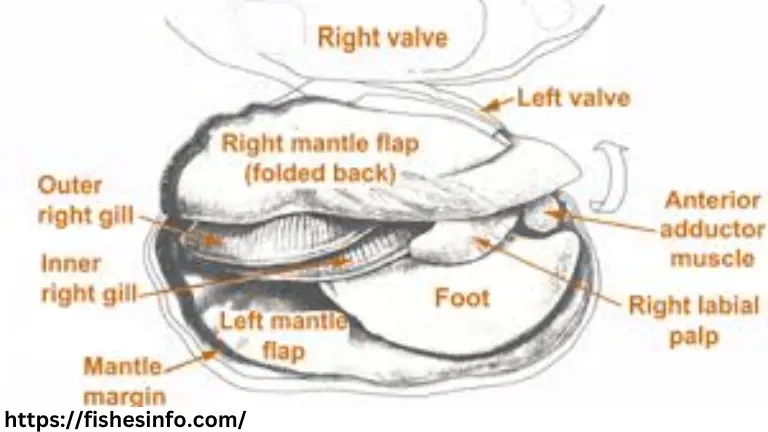
Tissues and Muscles
Molluscans have a soft-bodied internal structure with a body cavity filled with fibrous tissue or fluid-filled spaces.
When filled with fluid, the hemocoel expands, providing a rigid framework and stretching opposing muscles. This allows the foot to extend from the shell and penetrate sediment for burrowing.
In contrast, extrusion of the head and foot from the shell, shell elevation, and rapid expansion and contraction of the mantle are due to muscle contractions in the mantle tissue. The basic muscle systems are sub integumental, longitudinal, and dorsoventral.
The Nervous System and Organs of sensation
Molluscs have a typical nervous system consisting of cerebral ganglia that innervate their head, mouth, and sense organs. Two pairs of longitudinal nerve cords, pleural and pedal, emerge from the dorsal cerebral ganglia, which are interconnected by lateral branches of nerve fibers.
The radar apparatus in the head is supplied by a buccal nerve loop with paired ganglia. Posterior paired visceral ganglia innervate the viscera. Other molluscs have various grades of ganglia, all of which may be concentrated anteriorly.
Special nerve configurations are found in gastropods due to torsion, while cephalopods have a cartilaginous capsule enclosing the concentrated mass of ganglia.
The chemoreceptive sense organ (osphradium) monitors water currents entering the mantle cavity, which has regressed in scaphopods, some cephalopods, and some gastropods. Pluricellular mantle papillae are differentiated in placophores as photoreceptors.
Orientation in different gastropods is evidenced by the reaction to polarized light while homing in other gastropods and chitons that flee from light appears to be performed by chemoreception along their mucus trails.
Digestive System of Molluscs
The primitive alimentary tract is straight and consists of a foregut with glands and chitinized teeth called the radula. It is used to bite, tear, and scrape food materials. The radula’s structural differences between caudofoveates, solenogasters, and gastropods help classify them.
The midgut in caudofoveates divides into a hindgut and a large ventral sac for enzyme production. In placophores and conchifers, the midgut is divided into a slender esophagus, a distinct stomach with digestive glands, and a slender, often looped intestine.
In primitive conchiferous, the stomach is of the style sac type, with the esophagus opening into an anterior elaboration of the stomach. Cilia line the style sac, forming a protostyle or crystalline style.
Digestion in primitive forms appears to be both intracellular and extracellular, while in advanced levels, either intracellular or extracellular digestion appears to be exclusively elaborated.
Circulatory System of Molluscs
Mollusks have an open circulatory system, with body fluid (hemolymph) transported within sinuses without distinct epithelial walls. The posteriodorsal heart, enclosed in a pericardium, consists of a ventricle and two posterior auricles.
Hemolymph is drained from specialized respiratory epithelia into the auricles and then pumped through a middorsal sinus or vessel into body tissues. Hemoglobin, a respiratory pigment, is commonly dissolved in the fluid.
In chitons and monoplacophorans, the heart also performs purifying ultrafiltration, with waste products discharged into the pericardium and excretory organs.
Reproductive System of Molluscs
Adult cephalopods and some other molluscs have a paired dorsal gonad that maintains a developmental connection with the pericardium.
Eggs or sperm are discharged into the pericardial cavity, where they are transported to the environment for fertilization. In advanced molluscs, gonoducts transport gametes to the mantle cavity.
Glands may secrete protective coatings around the egg. In gastropods, the left gonad is reduced, and only the right gonad is operational, leaving the internal body asymmetrical.
Endocrine System of Molluscs
Hormone production in molluscs is limited to gastropods and cephalopods, where neurohormonal control is performed through cerebral dorsal bodies and lateral lobes, and optic glands in cephalopods.
Hormones can also cause death by starvation after laying eggs or mating. Neurosecretions by cells outside nerve cell bodies have been described in these species.
Heart rate is crucial in metabolic processes, with hormones affecting the heart released from vein walls or subesophageal ganglia. Insulin-like hormones control glucogen storage as a reserve nutrient.
Frequently Asked Questions (FAQ)
Are Molluscs Shellfish?
Yes, They are classified as shellfish. Shellfish is a general word used to describe aquatic creatures with shells, and molluscs, such as clams, mussels, oysters, and scallops, come under this group. Other forms of shellfish, such as crustaceans (e.g., shrimp, crab, lobster) and echinoderms (e.g., sea urchins, sea cucumbers), are also included in this category.
Are Molluscs Invertebrates?
Yes, These are invertebrates, which implies they do not have a backbone. Instead, they have soft bodies that are generally covered by a hard shell. Despite their lack of a backbone, mollusks demonstrate a great range of morphologies and adaptations, making them a fascinating group of organisms to study.
Are Molluscs Vertebrates?
No, mollusks are not vertebrates. They belong to the phylum Mollusca, which is a collection of invertebrate creatures. Vertebrates, on the other hand, are creatures that have a backbone or spinal column. Despite not being vertebrates, mollusks are highly varied and include species like snails, clams, octopuses, and squid, each with its distinct traits and habits.
Are Molluscs Animals?
Yes, mollusks are animals! They belong to the kingdom Animalia and are noted for their delicate bodies, frequently covered by shells. They are a varied category that includes recognizable species like snails, clams, and octopuses. They perform vital roles in diverse ecosystems and are intriguing to study owing to their distinct adaptations and habits.
Are Mollusks Fish?
No, They are not fish. Fish are a unique group of vertebrates that live in water and are distinguished by possessing fins, gills, and frequent scales. Mollusks, on the other hand, are invertebrates that include species like snails, clams, and octopuses. While both fish and mollusks exist in watery habitats, they are separate sorts of creatures with different traits and evolutionary histories.
Can Mollusks Feel Pain?
The subject of whether mollusks can experience pain is a difficult and contested matter. Molluscs have a less centralized neural system compared to vertebrates, prompting some scientists to speculate that they may not sense pain in the same manner. However, they do contain nerve cells and reactions to stimuli, which shows they may have some capability for nociception, the ability to perceive potentially painful stimuli. More study is required to properly grasp the degree to which mollusks may sense pain.
Conclusion
In Short, Mollusks are wonderful organisms, reflecting the beauty and variety of life on Earth. From the delicate motions of octopuses to the beautiful designs of shells, these creatures enchant us with their distinct adaptations and habits.
While they may be distinct from us, their existence on our planet reminds us of the connectivity of all living things. As we continue to research and learn about mollusks, let us also try to safeguard and maintain their ecosystems, so that future generations may wonder at these fascinating critters.
